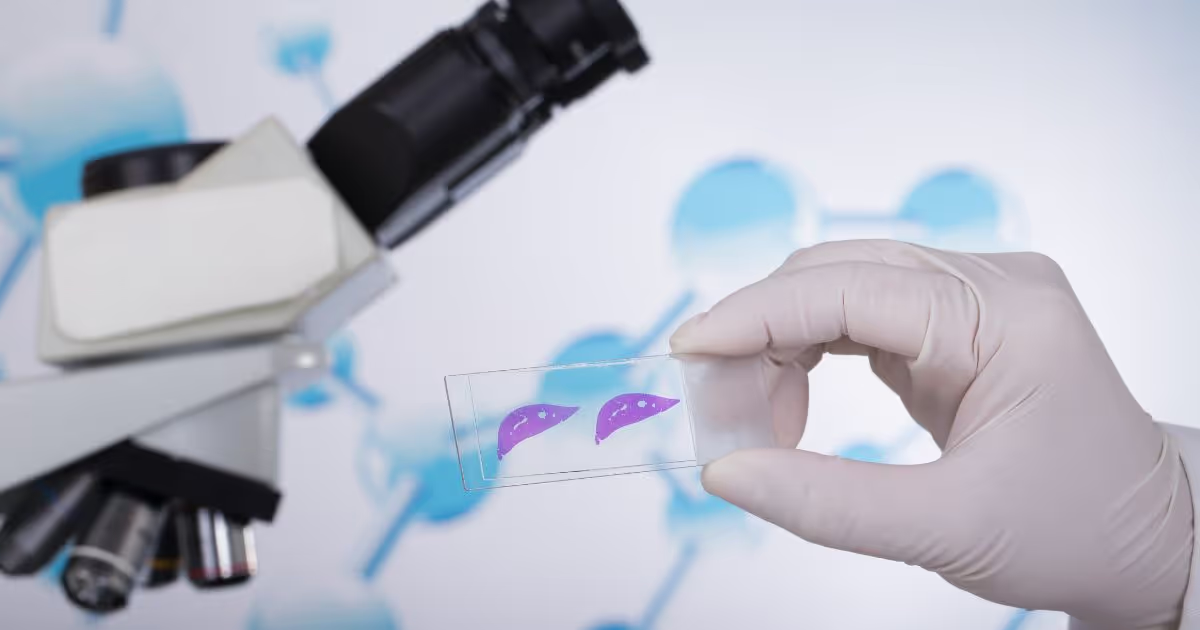Choose the content to read
- What is a liver biopsy?
- What are the procedural steps of a liver biopsy?
- How many methods are there for liver biopsy for diagnosis?
- What are the risks of a liver biopsy?
- Other rare but concerning complications
- A note from MedPark’s doctor
What is a liver biopsy?
A liver biopsy removes liver tissue samples for microscopic examination using a specialized needle capable of coring out a cylinder of liver tissue to help diagnose and stage liver diseases.
Why is a liver biopsy necessary?
It is the gold standard for diagnosing liver diseases and lesions. It helps to assess the progression of chronic liver disease, determine the extent of fibrosis in the liver, and assign a score and staging and severity of several kinds of tumors, including cancer. The information is valuable for prognostication, guiding treatment plans, and evaluating their effectiveness.
A liver biopsy can diagnose various liver conditions, including fatty liver disease, chronic hepatitis, cirrhosis, and liver tumors, including liver cancer. In addition, it can pinpoint specific causes or types of liver disease, such as:
- Alcoholic liver cirrhosis or other factors such as drugs or chronic viral infections.
- Autoimmune, viral, drug-induced hepatitis, or toxin-induced hepatitis.
- Glycogen storage diseases (A genetic disorder that causes excessive storage of glycogen)
- Hemochromatosis.
- Liver tumors such as hepatocellular carcinoma (HCC), lymphoma, or metastatic cancer
- Fatty liver disease.
- Primary biliary cholangitis.
- Primary sclerosing cholangitis.
- Pulmonar tuberculosis.
- Wilson’s disease or buildup of coppers in the body.
What are the procedural steps of a liver biopsy?
Your experience during a liver biopsy varies depending on the type of procedure chosen. While the percutaneous liver biopsy is the most popular technique, it may not be appropriate for everyone. Your healthcare provider might suggest an alternative biopsy type if you:
- Have difficulty holding still during the procedure.
- Have a history of bleeding issues or blood-clotting disorders or are at risk of such problems.
- Have a tumor affecting blood vessels in the liver.
- Have marked abdominal fluid accumulation (ascites).
- Are morbidly obesity
- Have liver infections.
Before the liver biopsy procedure
- Inform your doctor about the medications and dietary supplements you are taking. You may need to stop drugs that can increase the risk of bleeding, such as aspirin, ibuprofen, and anticoagulants.
- Have a blood test to assess (coagulogram) if you have blood-clotting problems.
- Ask a friend or family member to be your driver on the day of the procedure and stay with you on the first night in case you have complications.
- Refrain from eating or drinking for 6-8 hours before the liver biopsy.
During the liver biopsy procedure
- An intravenous (IV) line will be placed usually in your arm to administer medications if necessary.
- The doctor will administer local anesthesia or light sedation.
How many methods are there for liver biopsy for diagnosis?
Percutaneous Liver Biopsy
It is the most common procedure requiring minimal preparation and equipment with low risks of complications.
Your doctor will locate your liver under ultrasound guidance. You lie on your back with the right hand positioned above your head on the table. The doctor will scrub the biopsy site with an antiseptic solution and administer local anesthesia, where insertion of a biopsy needle will take place. The actual biopsy only takes a short time. You will be asked to hold your breath during each needle biopsy. Two to three biopsies are typically performed to ensure adequate tissue samples for further pathological evaluation.
In case we cannot perform a percutaneous liver biopsy due to massive ascites, we have to take another approach, such as transjugular liver biopsy or laparoscopic surgery.
Transjugular Liver Biopsy
You lie on an X-ray table. The doctor injects a local anesthetic into your neck, inserts a catheter into your jugular vein, and threads it toward the hepatic vein. Contrast dye is injected into hepatic veins to confirm the correct location. A biopsy needle is passed through the catheter and hepatic vein wall to obtain liver samples. The doctor withdraws the catheter and dresses the puncture site in your neck with a bandage.
Laparoscopic Biopsy
You lie supine on the operating table. Under general anesthesia, the surgeon makes small skin incisions in your abdomen and inserts laparoscopic ports. A laparoscope with a tiny camera is inserted through a port, projecting images onto a monitor. Your doctor can explore your internal organs before obtaining liver tissue samples. Once the surgeon takes the biopsy samples, the operative tools are removed, and the incisions are closed with stitches.
After the liver biopsy procedure
- You will rest in a recovery room for 2-4 hours or longer for a transjugular biopsy. You may need to spend one night in the hospital if necessary.
- You may feel discomfort or pain over the incision, which may last a week.
- You should avoid lifting heavy objects weighing more than 5 kilograms for one week.
- You will be able to resume your daily activities within one week.
- During a follow-up appointment, your doctor will explain the results and stage of your liver condition and plan any necessary treatment options with you.
- Seek immediate medical care if you develop severe pain, fever, weakness, syncope, difficulty breathing, rapid heartbeat, jaundice, or abdominal distention.
What are the risks of a liver biopsy?
A liver biopsy is a safe procedure. The risk of life-threatening complications is rare. Adequate preparation can prevent complications.
However, common complications may include pain and low blood pressure.
- Pain: Temporary discomfort in the upper abdominal region radiating to the right shoulder is common. It is typically mild and manageable with medications. Intense or prolonged pain could indicate other complications.
- Low blood pressure: Some individuals may experience a temporary drop in blood pressure, leading to mild lightheadedness. This is usually transient and not a cause for concern. Nevertheless, if a significant drop in blood pressure accompanied by weakness or dizziness happens, it might signify internal bleeding.
Other rare but concerning complications
- Internal bleeding. If excessive bleeding occurs, you will need a blood transfusion or surgical intervention.
- Bacterial infection
- Internal organ injury, such as the lung or gallbladder, leads to bile leak or pneumothorax.
A note from MedPark’s doctor
A liver biopsy is a quick and effective procedure for diagnosing liver diseases and designing a proper treatment plan.


